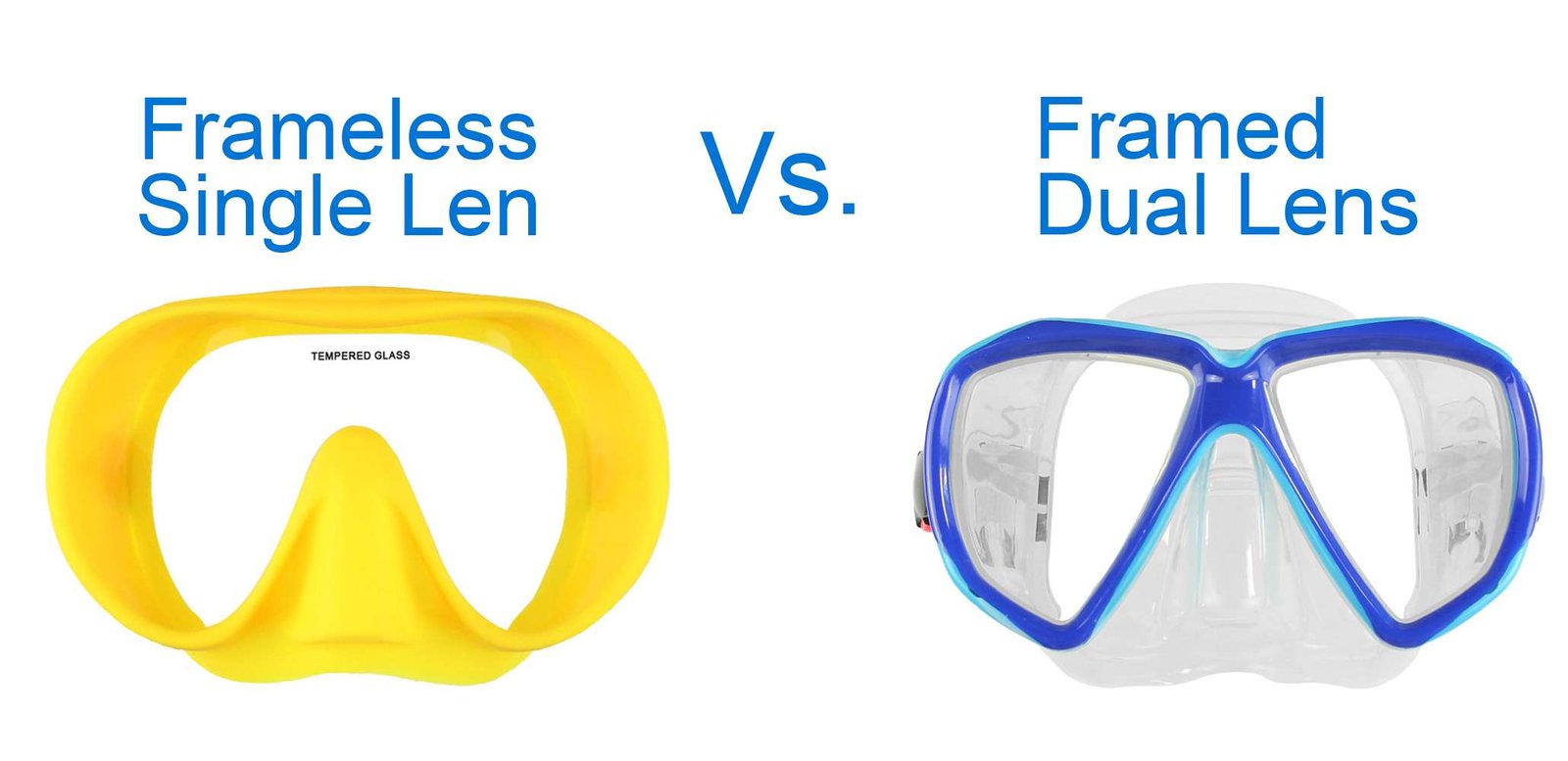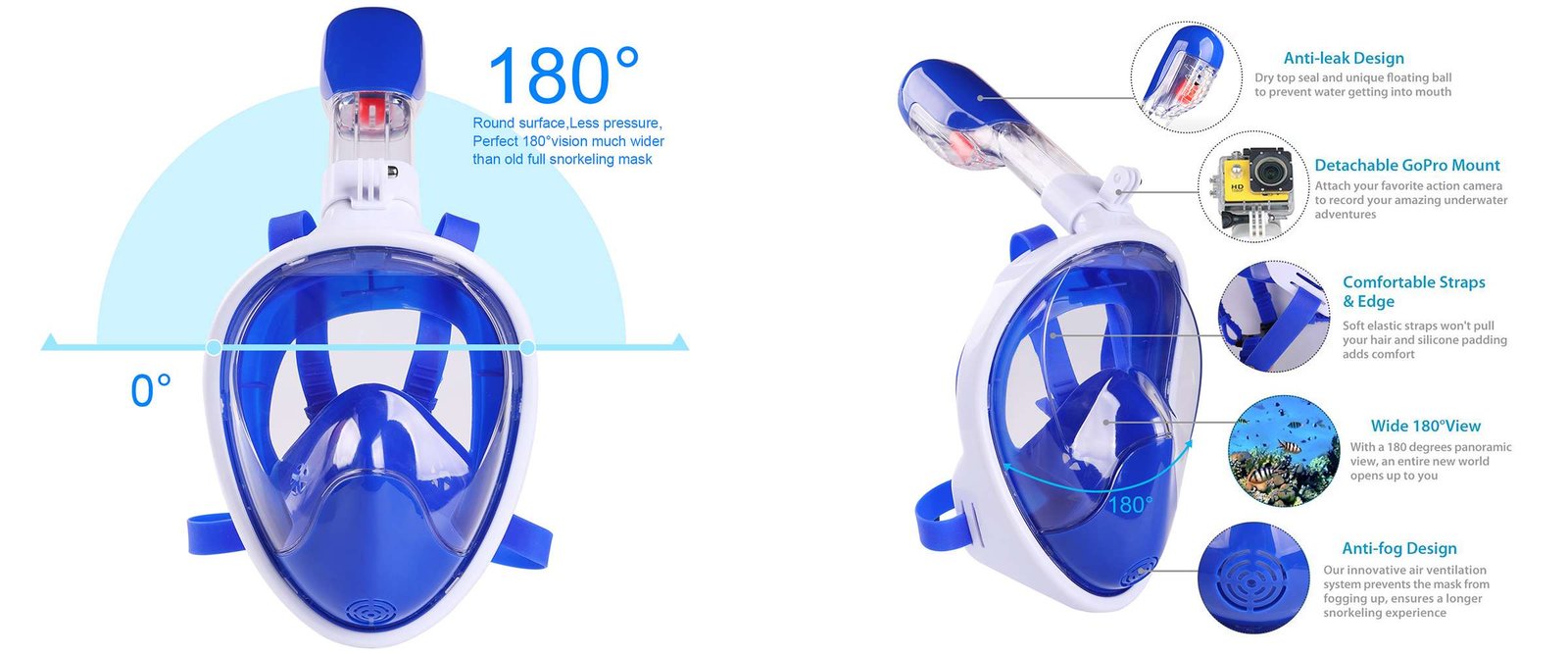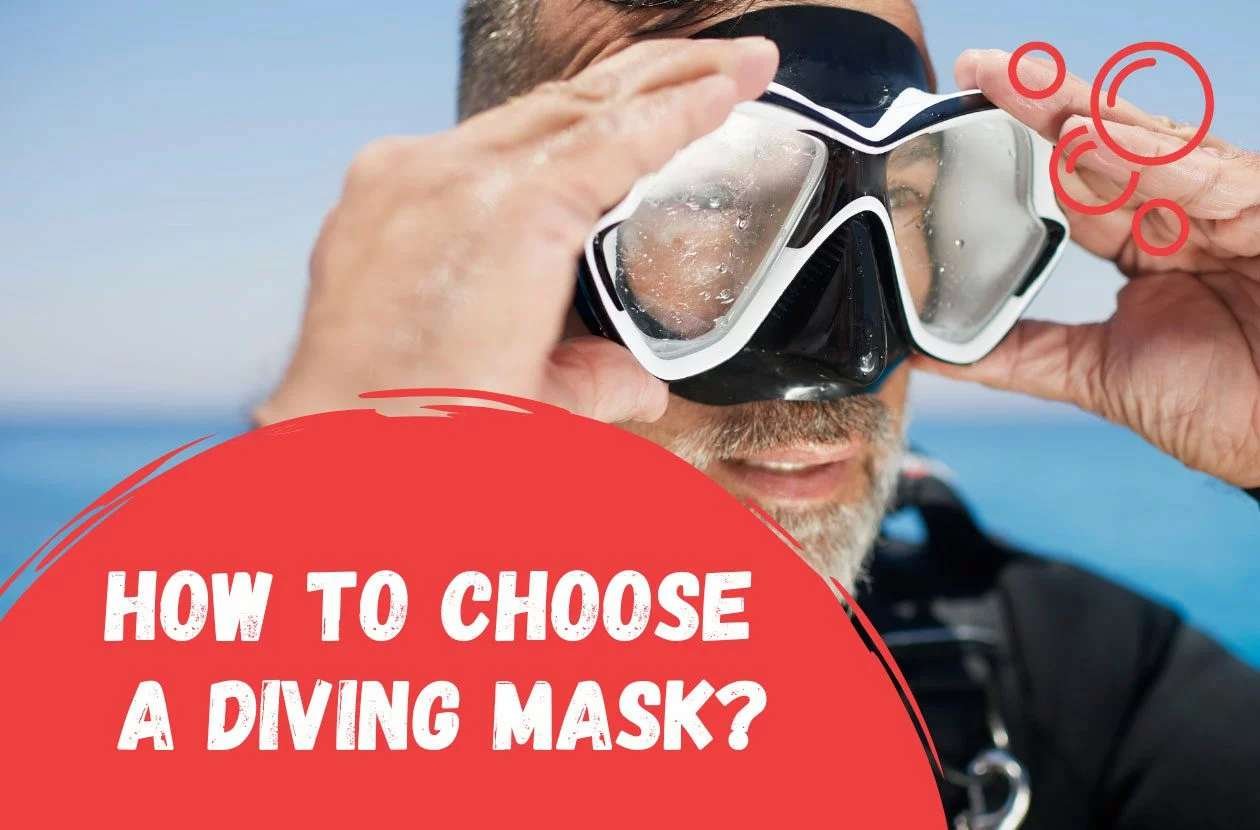Choosing the right diving mask is crucial for a clear underwater vision and a comfortable diving experience. With various styles available on the market, each design comes with unique features catering to different preferences and needs. In this guide, we’ll explore how to choose a diving mask and highlight the distinctive characteristics of different styles:
1.Different Lens diving mask:

– Single Lens Mask:
A single large lens covering the entire eye area. This design provides a wider field of view since there is no central bridge or pillar obstructing the vision. Single lens masks typically have lower internal volume, as there is only one lens, which makes them less affected by pressure during deep dives. Single lens masks are often considered to provide a more natural and unobstructed viewing experience.
– Dual Lens Mask:
A mask that has two separate lenses, with each lens corresponding to one eye. This design usually incorporates a frame with a central bridge between the two lenses. Dual lens masks offer good field of view and typically have smaller volume. With two independent lenses, dual lens masks can Custom individuals with different eye prescriptions.
– Frameless Mask:
As the name suggests, do not have a rigid frame around the lenses. Instead, the skirt directly attaches to the lenses, forming a seamless, one-piece construction. The absence of a frame makes the mask lighter, more compact, and easier to fold or store. Frameless masks often have a lower profile, which can reduce drag in the water. They also provide a wider field of vision since there is no frame obstructing the peripheral view.
2.Full Face Diving Mask:

– Integrated Ventilation System:
Full face diving masks feature an integrated ventilation system, allowing divers to breathe naturally through their mouth or nose. This design promotes a more relaxed and comfortable breathing experience, especially for beginners or those uncomfortable with traditional masks.
-Unobstructed Vision:
The entire face of a full face mask is transparent, eliminating the middle frame and providing a broader field of view. This enhances a diver’s ability to observe the underwater environment, contributing to a more enjoyable underwater adventure.
-All-in-One Contruction:
The one-piece design of a full face diving mask simplifies the gear, eliminating the need for an additional snorkel. This streamlined construction makes it easier to put on and is particularly suitable for novice divers.
-Clear Vision:
Many full face masks come equipped with anti-fog features, ensuring clear visibility of the lens underwater. This helps prevent fogging issues, allowing divers to maintain a clear line of sight.
-Suitable for Anxiety or Beginners:
The spacious design of a full face mask reduces the feeling of confinement, making it a suitable option for individuals who may experience anxiety or for those just starting their diving journey. The added space enhances comfort and boosts confidence underwater.
3.Fit and Seal:
– Position the Mask:
Hold the mask up to your face, ensuring that your hair is clear of the mask skirt. Place the mask gently against your face, with the strap hanging loose.
-Inhale through the Nose:
Without putting on the strap, inhale gently through your nose. The mask should create a slight suction and stay in place on your face without holding it.
-Check for Comfort:
Assess the comfort level of the mask. It should feel snug but not excessively tight. Pay attention to any pressure points or discomfort around the nose, forehead, or cheekbones.
-Press and Hold:
Press the mask gently against your face with your hands, covering the lens area. Hold it in place for a few seconds while continuing to inhale through your nose. This helps to create a stronger seal and simulate the pressure encountered during diving.
-Observe for Leaks:
While still holding the mask, observe for any signs of leaks. Pay attention to the skirt area, especially around the nose, cheeks, and chin. If there are any leaks, adjust the position of the mask and repeat the previous steps.





